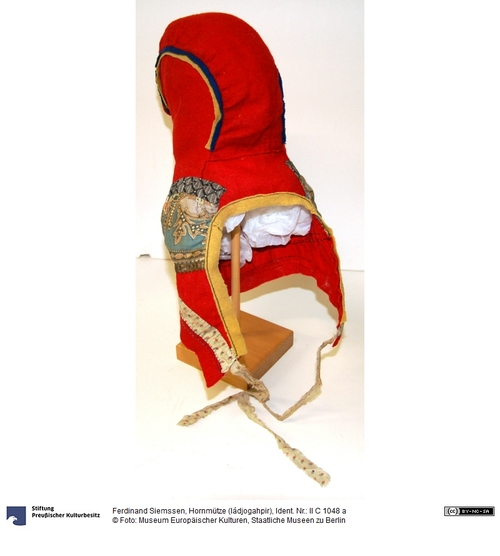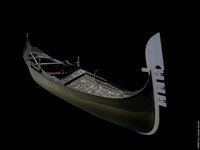Hornmütze für Frauen, roter Wollstoff, mit buntem Baumwollstoff und Goldlitze benäht.
Dazu gehört das "Horn" aus Leder [II C 1048 b].
Die Kirche hat die Anwendung dieser Mützenform während der Zwangschristianisierung verboten, da das Horn angeblich an ein Teufelshorn erinnere. - Gewebtes Band, um das Horn festzuhalten fehlt. Es wurde am unteren Teil des Hornes auf der Mütze getragen.
Angaben zur Herkunft:
Ferdinand Siemssen, Sammler
2. Hälfte 18. Jh.
Samen (Sámi, "Lappen") (Ethnie)
Sápmi (Nordeuropa) (Region)
Gebrauchsort: Nordnorwegen und Finnland (Region)
en

